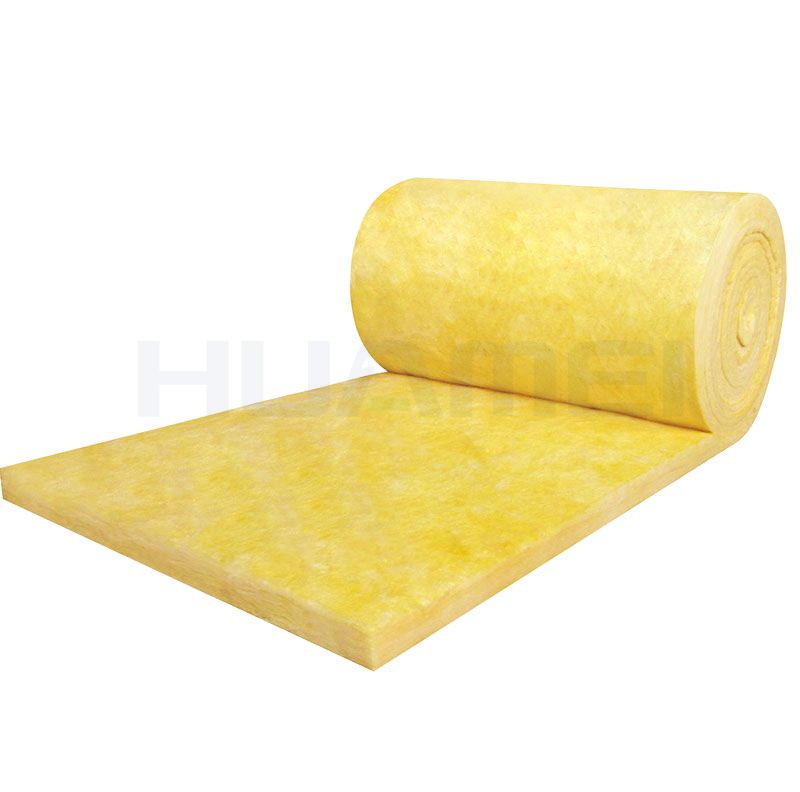Glass wool has many advantages such as non-combustibility, non-toxicity, corrosion resistance, small bulk density, low thermal conductivity, strong chemical stability, low moisture absorption, good hydrophobicity, etc. It is currently recognized as a superior thermal insulation, heat insulation and sound absorbing material. Wide range of uses. The boards, felts and pipes made of this material have been widely used in the fields of construction, chemical industry, electronics, electric power, metallurgy, energy, transportation and other fields for thermal insulation, sound absorption and noise reduction, and the effect is very significant. Glass Wool Manufacturer introduces the advantages of glass wool.
1. Thermal insulation
Huamei glass wool slag ball has low content and slender fibers, which can effectively confine air and make it unable to flow, preventing convective heat transfer of air, greatly reducing the thermal conductivity of the product, and at the same time rapidly attenuating the transmission of sound. Excellent thermal insulation, sound absorption and noise reduction.
2. Good thermal stability
Huamei glass wool has good high-temperature thermal stability, durability and ability to resist high-temperature shrinkage; it can maintain safety, stability and high performance for a long time in the recommended operating temperature range and under normal working conditions.
3. Different lasting moisture resistance
Hydrophobicity is the ability of a material to resist water penetration. Huamei glass wool has a water-repellent rate of not less than 98%, which makes it have more consistent and stable thermal insulation performance.
4.Good fire resistance
Tested in accordance with GB 8624-2012, Huamei glass wool is a non-combustible Grade A material.
Glass Wool
Finally, the Rubber Foam Insulation Factory will introduce the precautions for glass wool construction.
Roof construction
1. When laying glass wool roll felt, the veneer faces the indoor side and is perpendicular to the purlin, leaving an extra 20 cm of roll felt on one side of the eaves, and fix it on the outermost purlin with special clamps or double-sided tape.
2. When unwinding, ensure the alignment and tension. Lay the glass wool roll felt to the other eaves. Leave 20 cm more roll felt, and fix it on the outermost purlin with special clamps or double-sided tape.
3. The two rolls of cotton are connected by a stapler binding method on the veneer flash.
4. Install the roof color steel plate, remove the special fixture at the eaves, and use the reserved 20 cm veneer to close the glass wool.
5. Pay attention to the tension and alignment of the glass wool roll felt, and the seams between rolls are tight. When overlap is required in the longitudinal direction, the overlap joints should be installed at the row of purlins.
6. According to the needs of the project, in order to avoid the occurrence of cold bridges, you can consider padding some hard insulation materials on the purlins.
Wall construction
1. The veneer faces the indoor side, unwind from the eaves to the foot of the wall, and fix the glass wool to the bottom purlin with double-sided tape, leaving 20 cm more.
2. Cut the glass wool roll felt 20 cm above the top of the wall and fix it with double-sided tape.
3. Close the glass wool and install the color steel plate on the wall.
4. The two rolls of cotton are connected by a stapler binding method on the veneer flash.
5. Pay attention to keeping the glass wool rolls tight, aligned, vertical, and the seams between rolls tight.
These are the advantages of Glass Wool and the considerations for glass wool construction.

评论
发表评论